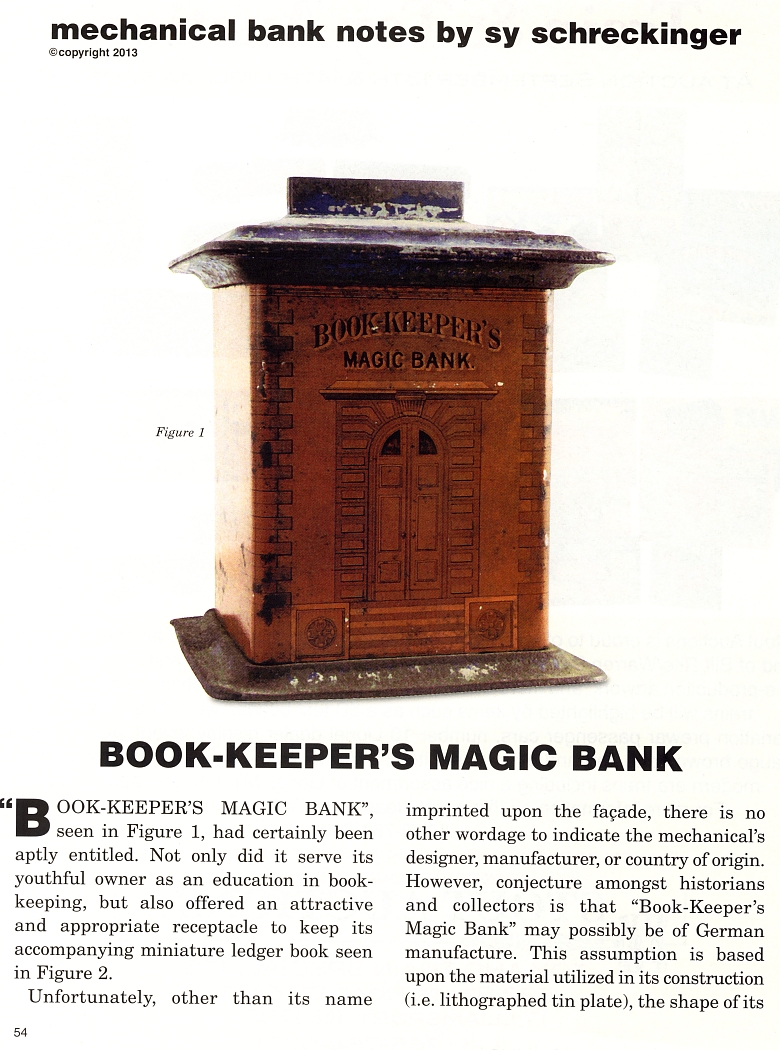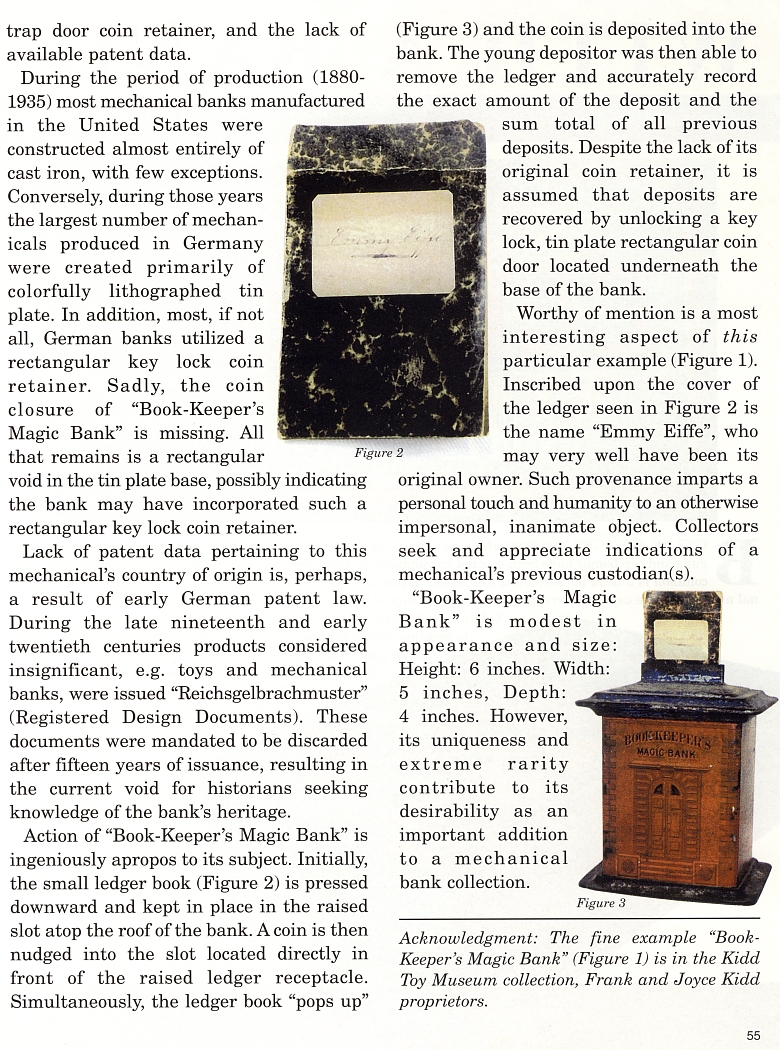|
BOOK-KEEPER'S MAGIC BANK
by Sy Schreckinger – ANTIQUE TOY WORLD Magazine –
September, 2013
"BOOK-KEEPER'S MAGIC BANK", seen in Figure 1, had certainly been aptly
entitled. Not only did it serve its youthful owner as an education in
bookkeeping, but also offered an attractive and appropriate receptacle
to keep its accompanying miniature ledger book seen in Figure 2.
Unfortunately, other than its name imprinted upon the facade, there
is no other wordage to indicate the mechanical's designer, manufacturer,
or country of origin. However, conjecture amongst historians and
collectors is that "Book-Keeper's Magic Bank" may possibly be of German
manufacture. This assumption is based upon the material utilized in its
construction (i.e. lithographed tin plate), the shape of its trap door
coin retainer, and the lack of available patent data.
During the period of production (1880-1935) most mechanical banks
manufactured in the United States were constructed almost entirely of
cast iron, with few exceptions. Conversely, during those years the
largest number of mechanicals produced in Germany were created primarily
of colorfully lithographed tin plate. In addition, most, if not all,
German banks utilized a rectangular key lock coin retainer. Sadly, the
coin closure of "Book-Keeper's Magic Bank" is missing. All that remains
is a rectangular void in the tin plate base, possibly indicating the
bank may have incorporated such a rectangular key lock coin retainer.
Lack of patent data pertaining to this mechanical's country of
origin is, perhaps, a result of early German patent law. During the late
nineteenth and early twentieth centuries products considered
insignificant, e.g. toys and mechanical banks, were issued "Reichsgelbrachmuster"
(Registered Design Documents). These documents were mandated to be
discarded after fifteen years of issuance, resulting in the current void
for historians seeking knowledge of the bank's heritage.
Action of "Book-Keeper's Magic Bank" is ingeniously apropos to its
subject. Initially, the small ledger book (Figure 2) is pressed downward
and kept in place in the raised slot atop the roof of the bank. A coin
is then nudged into the slot located directly in front of the raised
ledger receptacle. Simultaneously, the ledger book "pops up" (Figure 3)
and the coin is deposited into the bank. The young depositor was then
able to remove the ledger and accurately record the exact amount of the
deposit and the sum total of all previous deposits. Despite the lack of
its original coin retainer, it is assumed that deposits are recovered by
unlocking a key lock, tin plate rectangular coin door located underneath
the base of the bank.
Worthy of mention is a most interesting aspect of this particular
example (Figure 1). Inscribed upon the cover of the ledger seen in
Figure 2 is the name "Emmy Eiffe", who may very well have been its
original owner. Such provenance imparts a personal touch and humanity to
an otherwise impersonal, inanimate object. Collectors seek and
appreciate indications of a mechanical's previous custodian(s).
"Book-Keeper's Magic Bank" is modest in appearance and size:
Height: 6 inches. Width: 5 inches, Depth: 4 inches. However, its
uniqueness and extreme rarity contribute to its desirability as an
important addition to a mechanical bank collection.
Acknowledgment: The fine example "Book-Keeper's Magic Bank" (Figure
1) is in the Kidd Toy Museum collection, Frank and Joyce Kidd
proprietors. |


